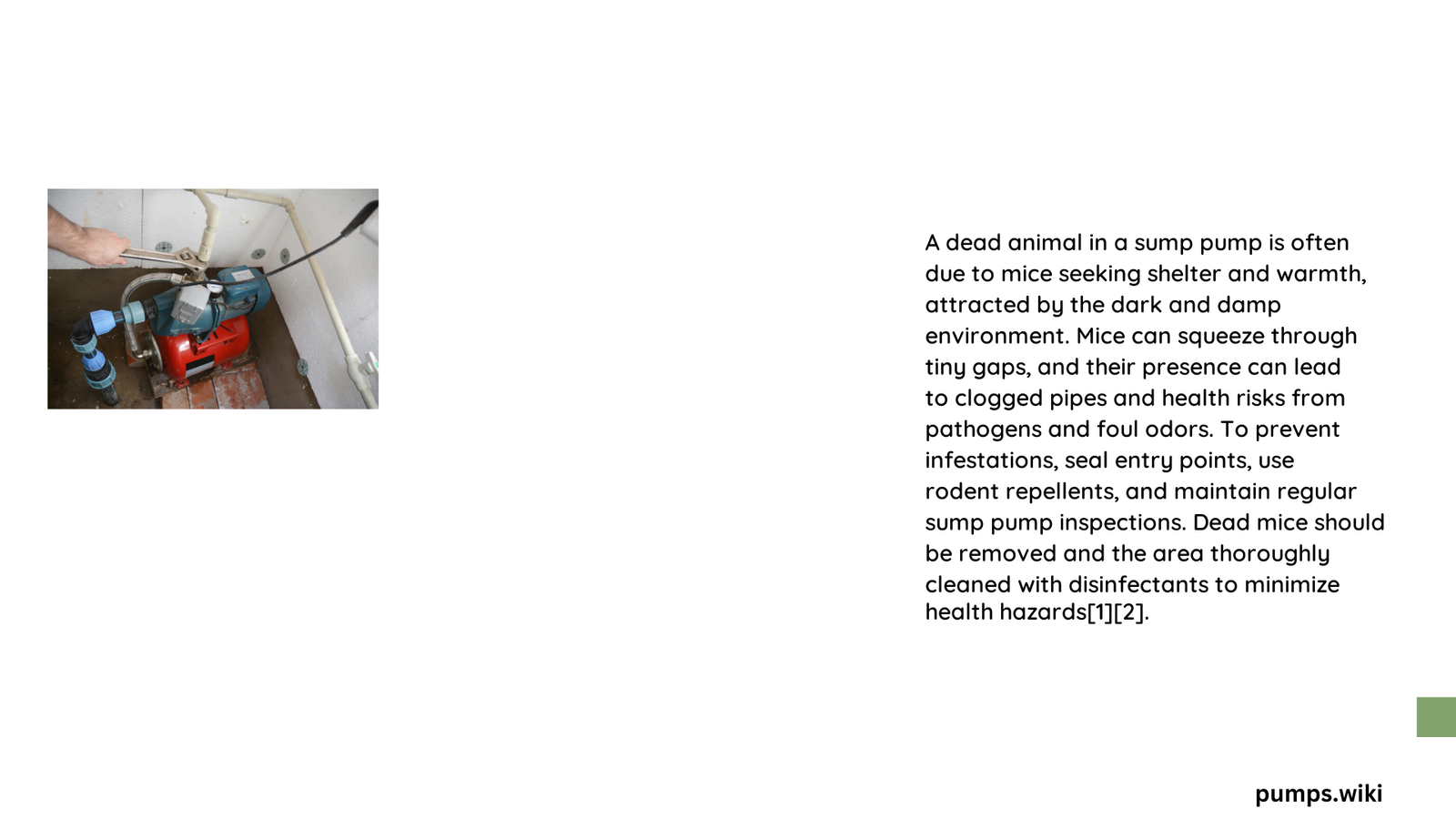Discovering a dead animal in your sump pump can be a distressing and potentially hazardous situation that requires immediate, careful intervention. Dead animals introduce harmful bacteria, create unpleasant odors, and can severely compromise your sump pump’s functionality, potentially leading to water damage, health risks, and expensive repairs if not addressed promptly and professionally.
What Happens When a Dead Animal Enters a Sump Pump?
When an animal dies inside a sump pump, multiple critical issues emerge that demand immediate attention:
Biological Contamination Risks
- Bacterial Proliferation: Decomposing animal carcasses release dangerous pathogens
- Potential Disease Transmission: Risk of waterborne illnesses increases dramatically
- Microbial Growth: Rapid multiplication of harmful microorganisms
Mechanical System Complications
| Problem | Potential Consequence | Severity |
|---|---|---|
| Blockage | Reduced Water Flow | High |
| Mechanical Obstruction | Pump Motor Strain | Critical |
| Corrosive Decomposition | System Component Damage | Extreme |
How to Safely Remove a Dead Animal from Sump Pump?

Preparation Steps
- Safety Equipment
- Heavy-duty rubber gloves
- Protective eyewear
- Waterproof clothing
-
Respiratory mask
-
Required Tools
- Wet/dry vacuum
- Disinfectant solution
- Bucket
- Garden hose
- Chlorine bleach
Detailed Removal Process
Power and Drainage Management
- Disconnect electrical power to the sump pump
- Drain standing water using wet/dry vacuum
- Carefully remove animal remains using disposable tools
Sanitization Protocol
- Flush system with clean water
- Apply chlorine-based disinfectant
- Rinse thoroughly to eliminate residual contaminants
What Preventive Measures Can Protect Sump Pumps?
Physical Barriers
- Install mesh screens over pump openings
- Seal potential entry points
- Maintain surrounding area cleanliness
Regular Maintenance
- Quarterly Inspections
- Annual Professional Evaluation
- Immediate Response to unusual sounds or odors
Cost Considerations for Dead Animal Removal
Professional Service Breakdown
| Service Level | Estimated Cost | Complexity |
|---|---|---|
| Basic Removal | $200 – $500 | Low |
| Complex Decontamination | $500 – $1,000 | High |
| Emergency Response | $750 – $1,500 | Critical |
Health and Environmental Implications
Potential Risks
- Waterborne disease transmission
- Ground and water source contamination
- Long-term system degradation
Recommended Follow-up
- Professional water quality testing
- Comprehensive system sanitization
- Potential replacement of contaminated components
Expert Recommendations
Quick Action Guidelines
- Never ignore unusual pump behavior
- Prioritize personal safety
- Document removal process
- Consider professional assistance
Long-Term Prevention Strategies
- Implement robust screening mechanisms
- Maintain consistent maintenance schedule
- Educate household members about potential risks
Conclusion
Addressing a dead animal in a sump pump requires methodical, careful intervention. While DIY methods are possible, professional assistance ensures comprehensive resolution and minimizes health risks.
Pro Tip: Always prioritize safety and systematic approach when dealing with potential biological contamination.
